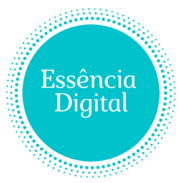Why the Right Tools Are a Freelancer’s Greatest Asset
In today’s competitive market, a successful freelancer is far more than just a specialist in their chosen field. They are a “solopreneur”—a one-person business responsible for juggling every role imaginable. You are the project manager, the chief marketing officer, the head of accounting, the customer service representative, and the creative talent, all at once. Navigating this complex landscape without the right support is a recipe for chaos.
This is where your digital toolkit becomes your greatest competitive advantage. The right stack of tools can be the difference between a disorganized, stressful operation and a streamlined, profitable, and enjoyable career. A well-curated tech stack will help you stay meticulously organized, deliver highly professional work, communicate with flawless efficiency, and—most importantly—free up your valuable time and mental energy to focus on the creative, high-value tasks that clients pay you for. This guide breaks down the essential tools for every stage of a freelancer’s workflow.
The Command Center: Project Management & Organization
This category forms the backbone of your freelance operation. These tools bring order to the chaos of multiple projects, deadlines, and client communications.
- Project Management Platforms (Trello, Asana, ClickUp): These platforms are your virtual war rooms. They allow you to break down large, intimidating projects into small, manageable tasks. Using visual boards (like Trello) or structured lists and timelines (like Asana), you can track progress, set deadlines, and attach relevant files. For freelancers who crave ultimate control, ClickUp aims to be an all-in-one solution. These tools prevent the number one cause of freelance failure: missed deadlines.
- The Digital Brain (Notion): Notion is more than a task manager; it’s a completely customizable workspace. It combines note-taking, project boards, client databases, and knowledge bases into a single, interconnected hub. Freelancers use it to build everything from a simple content calendar to a comprehensive client portal.
- The Foundational Ecosystem (Google Workspace): Beyond Gmail, the integrated suite of Google Drive, Docs, Sheets, and Calendar is the default ecosystem for most freelancers. It keeps all your files, meetings, and schedules synced, accessible from any device, and ready for seamless client collaboration.
The Client Interface: Communication & Scheduling
How you communicate with clients directly reflects on your professionalism. These tools ensure your interactions are smooth, clear, and efficient.
- Real-Time Communication (Slack): Email is for formal records; Slack is for real-time conversation. It reduces inbox clutter and creates a dedicated “project room” for each client, keeping all informal chats, quick questions, and file sharing in one organized place.
- Face-to-Face Meetings (Zoom, Google Meet): Video calls are essential for building rapport and handling complex discussions. A reliable video conferencing tool is non-negotiable for client kickoffs, presentations, and check-ins.
- Effortless Scheduling (Calendly): End the painful back-and-forth of “email tennis” to find a meeting time. Calendly allows you to share a link to your calendar, where clients can see your availability and book a time that works for everyone. It conveys professionalism and a deep respect for both your time and theirs.
The Bank: Finance & Payments
Treating your finances professionally is critical for long-term stability. These tools are your virtual accounting department.
- Invoicing & Accounting (FreshBooks, Wave, QuickBooks): Ditch the spreadsheet. Cloud-based accounting tools make it incredibly easy to create and send professional invoices, track business expenses, accept online payments, and see your financial health at a glance. They are lifesavers during tax season, generating the reports you need with a few clicks. Wave is a fantastic free option for those just starting out.
- Payment Gateways (PayPal, Stripe, Wise): You need secure, reliable ways to get paid. PayPal is known for its simplicity, Stripe is the gold standard for integrating payments into a website, and Wise is often the most cost-effective solution for international transfers with transparent fees.
The Vault: Secure File Management & Backup
A single hard drive failure could wipe out your entire business. A robust file storage and backup strategy is your professional insurance policy.
- Cloud Storage (Google Drive, Dropbox): These services ensure your active project files are secure, accessible from anywhere, and easily shareable with clients. They are essential for a modern, flexible workflow.
- Disaster Recovery (Backblaze): Cloud storage is for active files; cloud backup is for disaster recovery. A service like Backblaze runs continuously in the background, creating a complete, encrypted copy of your entire computer in the cloud. If your computer is lost, stolen, or broken, you can restore everything. It is inexpensive peace of mind.
The Storefront: Your Professional Presence
These tools help you showcase your work and attract a steady stream of high-quality clients.
- Your Digital Home (WordPress, Squarespace, Wix): Your portfolio website is the one piece of online real estate that you completely own and control. It’s your digital home base. Platforms like Squarespace and Wix make it easy to build a beautiful site without code, while WordPress offers limitless customization for those who want more control.
- Networking & Authority (LinkedIn): LinkedIn is more than an online resume. It’s a powerful platform for networking with peers, connecting with potential clients, and sharing content that establishes you as a thought leader in your niche.
Security Essentials: Protecting Your Business and Your Clients
As a solo business owner, you are a target for cybercriminals. Taking security seriously is part of being a professional.
- Password Manager (LastPass, 1Password): Reusing passwords is one of the biggest security risks. A password manager creates and stores strong, unique passwords for all your accounts, keeping your digital life—and your clients’ sensitive information—locked down.
- Secure Connection (NordVPN, ExpressVPN): When you work from a coffee shop, airport, or any public Wi-Fi, you are on an insecure network. A VPN (Virtual Private Network) encrypts your internet connection, creating a secure tunnel that protects your data from prying eyes.
How to Choose Your Tools
Don’t suffer from “Shiny Object Syndrome” by adopting every new tool you see. Instead:
- Identify Your Biggest Pain Point: Is your invoicing process a mess? Are you losing track of tasks?
- Start with One Solution: Research and trial one tool designed to solve that specific problem.
- Prioritize Integration: Choose tools that work well together to create a seamless workflow.
Conclusion: Build Your Freelance Toolbox Today
The goal is not to have the most tools, but to have the right tools. The perfect tech stack is one that feels invisible—it works so seamlessly in the background that it allows you to focus purely on delivering amazing work for your clients. By thoughtfully investing in your toolkit from the start, you will enhance your efficiency, elevate your professionalism, and build a freelance business with confidence and clarity.

